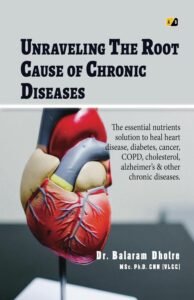Introduction
type 5 diabetes is what we have not heard of. The landscape of diabetes is evolving, and a significant development has recently been recognized by the International Diabetes Federation (IDF). They have officially acknowledged Type 5 Diabetes, also known as Malnutrition-Linked Diabetes (MLDM), as a distinct disease entity. This recognition marks a crucial step in understanding and managing diabetes that arises from chronic malnutrition rather than the typical insulin resistance or deficiency seen in Type 1 and Type 2 diabetes.
Table of Contents
What is Type 5 Diabetes or Malnutrition-Linked Diabetes (MLDM)?
Malnutrition-Linked Diabetes (MLDM), now classified as Type 5 Diabetes by the IDF, is a form of secondary diabetes that develops as a consequence of prolonged and severe undernutrition, particularly during critical stages of growth and development. Unlike Type 2 diabetes, which is often associated with obesity and insulin resistance, Type 5 Diabetes is characterized by pancreatic dysfunction resulting from chronic malnutrition.
Key Characteristics of Type 5 Diabetes (MLDM):
- Association with Severe Malnutrition: The primary cause of Type 5 Diabetes is a history of significant and prolonged undernutrition.
- Pancreatic Dysfunction: Chronic malnutrition can lead to damage and impaired function of the pancreas, affecting its ability to produce insulin effectively.
- Often Lean or Low BMI: Individuals with MLDM typically have a low Body Mass Index (BMI), contrasting with the higher BMI often seen in Type 2 diabetes.
- Distinct Pathophysiology: The underlying mechanisms leading to hyperglycemia in Type 5 Diabetes differ from those in Type 1 (autoimmune insulin deficiency) and Type 2 (insulin resistance).
- Historical Terms: Malnutrition-Linked Diabetes has been previously referred to by other names such as tropical diabetes and specific subtypes like fibrocalculous pancreatic diabetes (FCPD) and protein-deficient pancreatic diabetes (PDPD).
[ Note: In my book Unraveling the Root Cause of Chronic Diseases, I have discussed that cellular dysfunction is the root cause of almost all chronic diseases, including diabetes.]
Why is the IDF’s Recognition of Type 5 Diabetes Important?
The official recognition of Type 5 Diabetes by the IDF has several important implications:
- Improved Classification: It provides a more accurate and comprehensive classification of diabetes, acknowledging that not all cases fit neatly into the Type 1 or Type 2 categories.
- Enhanced Research: This distinction can spur more focused research into the specific causes, mechanisms, and optimal management strategies for Malnutrition-Linked Diabetes.
- Targeted Interventions: Recognizing it as a distinct entity can lead to the development of tailored interventions and nutritional support for affected individuals, particularly in regions where chronic malnutrition is prevalent.
- Increased Awareness: It raises awareness among healthcare professionals and the public about this less-understood form of diabetes.
Understanding the Link Between Malnutrition and Diabetes:
Chronic undernutrition, especially during childhood and adolescence when the pancreas is developing, can have lasting detrimental effects on pancreatic structure and function. This can impair insulin secretion and glucose regulation, eventually leading to the development of Malnutrition-Linked Diabetes.
Implications for Diagnosis and Management:
The recognition of Type 5 Diabetes highlights the need for careful assessment of nutritional history in individuals presenting with diabetes, particularly those with low BMI and a history of malnutrition. Management strategies for MLDM may differ from those for Type 1 and Type 2 diabetes, potentially focusing on nutritional rehabilitation alongside glucose control.
Conclusion: A Step Forward in Diabetes Understanding
The IDF’s recognition of Diabetes type 5, as a distinct disease, specifically linked to malnutrition, is a significant step forward in our understanding of the complexities of diabetes. By acknowledging Malnutrition-Linked Diabetes (MLDM), we can pave the way for more targeted research, improved diagnostic approaches, and ultimately, better care for individuals affected by this unique form of the disease. This development underscores the importance of considering the diverse etiological factors that can contribute to the development of diabetes beyond the traditional classifications.
Treatment with cellular nutrients
Lypro-C contains vitamin C, lysine, and proline, which keep arteries clean. This way, it removes any obstruction in the blood vessel that supplies blood to the pancreas.

keywords
diabetes type 5, Malnutrition-Linked Diabetes, MLDM, IDF, International Diabetes Federation, malnutrition, diabetes, distinct disease, secondary diabetes, undernutrition, tropical diabetes, fibrocalculous pancreatic diabetes, protein-deficient pancreatic diabetes, low BMI diabetes, diabetes classification, diabetes research, diabetes news, diabetes management
References
Type 5 diabetes. IDF Recognizes Malnutrition-Linked Diabetes as Distinct Disease: https://medicaldialogues.in/diabetes-endocrinology/news/type-5-diabetes-idf-recognizes-malnutrition-linked-diabetes-as-distinct-disease-146663
Type 5 Diabetes: The new health threat affecting millions of kids with this condition, here’s what every parent needs to know https://economictimes.indiatimes.com/news/new-updates/type-5-diabetes-the-new-health-threat-affecting-millions-of-kids-with-this-condition-heres-what-every-parent-needs-to-know/articleshow/120337001.cms?from=mdr


